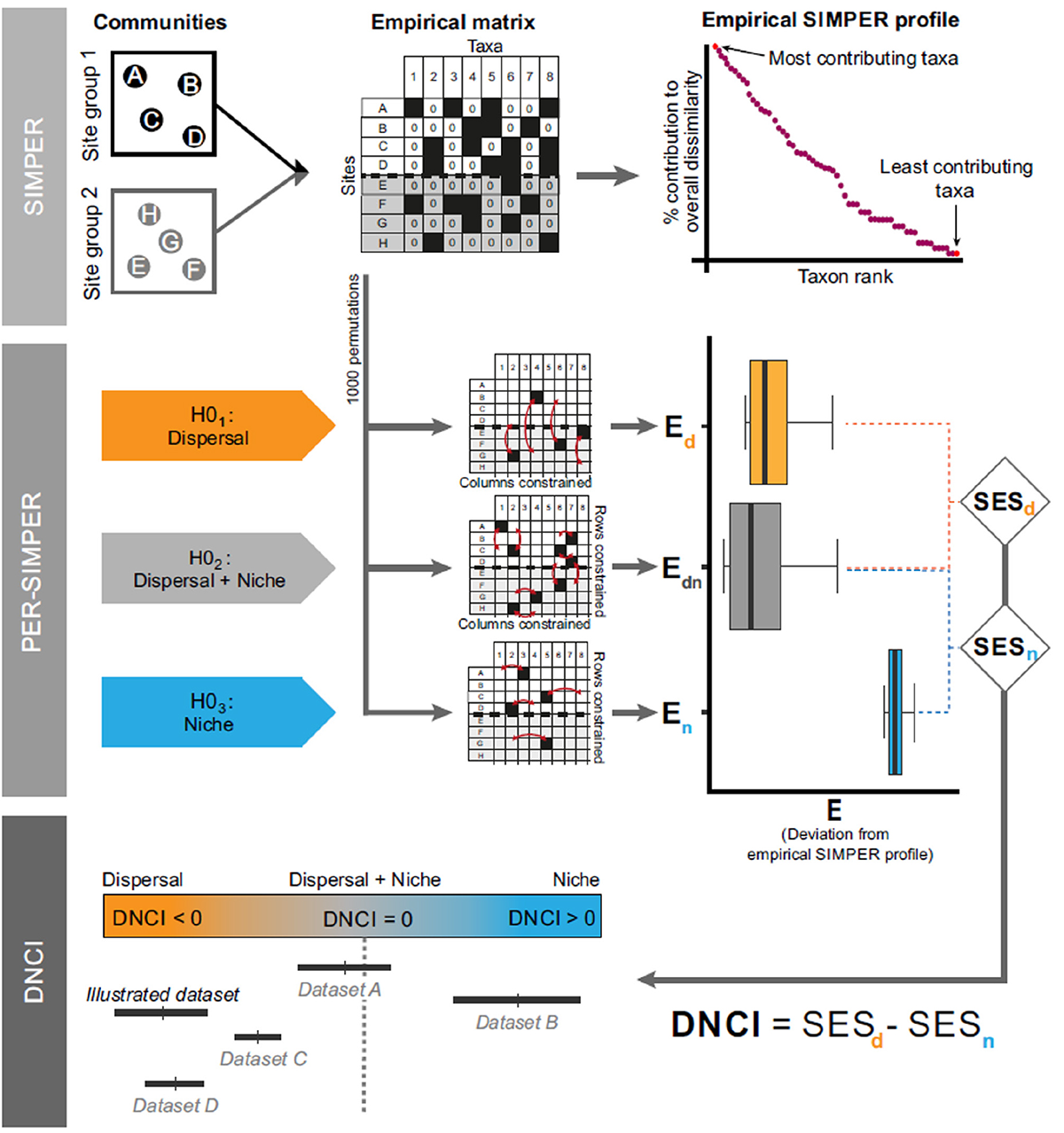Niche and dispersal processes are the two primary assembly processes, and it remains a challenging goal to distangle the relative importance of these two processes underlying biological communities. It is likely that niche and dispersal processes are not mutually exclusive but constitute the end points of a continuum.
Based on multiple null mudels, we recently proposed a new index, that is, Dispersal-Niche Continuum Index (DNCI), to quantify and compare the strengths of the two primary assembly processes across biological datasets. Positive or negative DNCI values indicate that niche or dispersal assembly is the main process structuring the studied site groups consisting of biological communities, respectively. Higher absolute values of the index represent greater potential strength of the dominant assembly process.
This study, equally lead by our PIFI Post Doc Annika and the researcher Corentin in University of Poitiers, was recently accepted for publication by Ecography. It took us over two years to conceive and prepare this paper, and we are happy to see it to be published in the near future. The R function to calculate the DNCI index is available at the DNCImper package. Here comes the abstract.
Patterns in community composition are scale-dependent and generally difficult to distinguish. Therefore, quantifying the main assembly processes in various systems and across different datasets has remained challenging. Building on the PER-SIMPER method, we propose a new metric, the Dispersal-Niche Continuum Index (DNCI), which estimates whether dispersal or niche processes dominate community assembly and facilitates the comparisons of processes among datasets. The DNCI was tested for robustness using simulations and applied to observational datasets comprising organismal groups with different trophic level and dispersal potential. Based on the robustness tests, the DNCI discriminated the respective contribution of niche and dispersal processes in pairwise comparisons of site groups with less than 40% and 30% differences in their taxa and site numbers, respectively. In the observational datasets, the DNCI suggested that dispersal rather than niche assembly was the dominant assembly process which, however, varied in intensity among organismal groups and study contexts, including spatial scale and ecosystem types. The proposed DNCI measures the relative strength of community assembly processes in a way that is simple, easily quantifiable and comparable across datasets. We discuss the strengths and weaknesses of the DNCI and provide perspectives for future research.
Reference:
A. Vilmi, C. Gibert, et al. Dispersal–Niche Continuum Index: a new quantitative metric for assessing the relative importance of dispersal vs. niche processes in community assembly. Ecography, 2021. DOI:10.1111/ecog.05356
